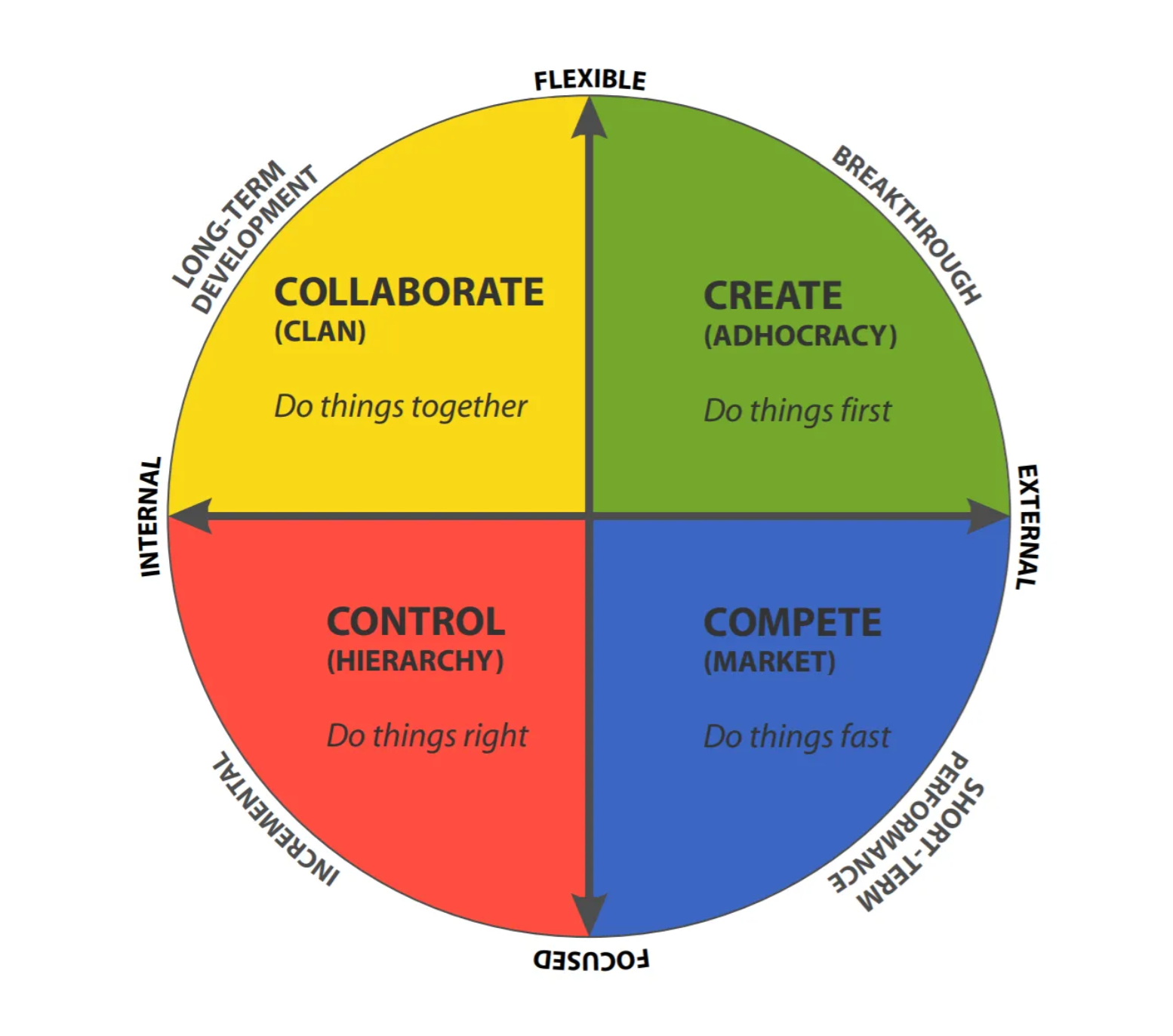
The impact of organizational culture on sustainability
08/29/23
It has been said that culture eats strategy for breakfast. This now age-old saying has been proven time and again. Organizational culture has increasingly become a topic of discussion and exploration amongst academia and the corporate world. Culture has been of particular importance in recent times, as disruptions, innovations, and changing social norms all require some attention to an organization’s culture.
Organizational culture is a shared set of values, goals, and attitudes within an organization. It is important in today's business landscape because the right culture fit for an organization can lead to increased competitive advantage. Potential employees, partners, investors, and clients purposely or inadvertently examine an organization’s culture before making decisions that could impact the business. Studies have shown that it impacts employee retention and job performance, as well as consumer choices and buying behaviors.
There are several ways to measure and understand organizational culture. One of the more widely used formats is called the Competing Values Framework.
The competing values framework

The Competing Values Framework (CVF) consists of two dimensions. The horizontal axis shows the focus of the organization – internal or external. The vertical axis depicts the organization’s level of flexibility – flexible or stable. This creates four cultural quadrants:
Clan: Flexible with an internal focus
These organizations are highly focused on collaboration and view/treat their employees as their greatest resource. They emphasize professional development for employees. Google is a good example of a Clan organization as they focus on building and strengthening connections in the workplace. They also offer employees a lot of flexibility in how, when, and where they complete their work.
Adhocracy: Flexible with an external focus
These are usually more creative organizations that are highly focused on innovation and doing things before anyone else. Organizations like Apple or Patagonia are good examples. They emphasize the need to change the way things have been done. Adhocracy organizations encourage ideas, flexibility, and risk for the sake of innovation and providing cutting-edge products or services.
Hierarchy: Stable with an internal focus
These organizations are those with a lot of regulations – government, health care, and education, for example. Most companies in this category must maintain a high level of structure. Or maybe they’ve been in business for so long that they are sort of stuck in the old way of doing things. They are usually larger, more bureaucratic organizations.
Market: Stable with an external focus
Many organizations fall into this category. They are focused on customers, suppliers, and the public, but they are all about doing things fast and maximizing the bottom line. Companies like Walmart that are high on the competition end of things fall into this category.
It should be noted that no organization fits firmly into one category, but rather they have characteristics of several types and can lean more heavily into one or more types.
How does this tie into sustainability?
Climate change, pollution, dwindling natural resources, and mounting societal pressures are becoming major concerns around the world. Stakeholders such as governments, consumers, investors, and the wider society expect corporations to be part of finding solutions to these sustainability problems. Businesses have responded and, in many cases, adopted sustainability practices to reduce their environmental and social impacts.
However, turning company values of sustainability into usable practices is not always straightforward, and a company's culture can have a significant impact on its ability to succeed with sustainability goals.
Do sustainability leaders share a similar organizational culture?
My research goal was to determine whether corporations that lead in sustainability, possess a particular organizational culture type. I also wanted to determine whether the contrary is true – that companies at the beginning stage of sustainability implementation also possess similar organizational cultures.
Seven sustainability practice themes
As a first step, sustainability practices mentioned in corporate sustainability reports by 200 organizations over a five-year period were aggregated into seven progressive themes. They include practices that are easy to implement and less impactful, to those with significant investment and greater impact.
- Pollution prevention/waste minimization: Practices that reduce resource use and ultimately reduce costs and risks to the company.
- Environmental impact analysis/environmental reporting: Practices related to publicly reporting on sustainability activities.
- Employee attraction, development, and retention: Practices related to attracting and retaining employees.
- Stakeholder engagement: Practices related to engaging with broader stakeholder groups and addressing societal challenges.
- Greening the supply chain: Practices related to assessment and mitigation of negative supply chain impacts.
- Innovation and clean technology: Practices related to the utilization of technologies that significantly reduce negative sustainability impacts and/or increase positive impacts.
- Sustainable development: Practices that go beyond increasing profits and seek opportunities outside of their business to develop transformational solutions.
Analyzing the results
Using computerized text analysis, the “influence” factor for each related practice code was calculated, resulting in an indication of the relative importance of a term to the report, and by extension, the importance of this practice to the company’s sustainability strategy.
Sustainability leaders were expected to have a high level of discussion on most practice themes with several higher-level themes. Beginners were expected to have high discussion on more of the lower practices, with none or few higher-level themes. Clustering the organizations by the level of discussion of the practices adopted, I was able to form groups of organizations with similar prioritization of sustainability practices.
Correlation between company culture and sustainability practices?
Using established protocol for determining organizational culture, the cultural profile (using the CVF framework) for each organization was found. By clustering the organizations using these cultural profiles, groups of four similar organization types were found in the sample. Alignment between the practice groups and culture groups was then determined using various statistical methods.
The results showed that there is some significance in the correlation between certain culture types and sustainability practices groups. Organizations with an Adhocracy culture – highly agile and innovative – tended to have more intent discussions around advanced and comprehensive sustainability practices. They scored highly in most, if not all, seven themes.
Other cultures scored high in only a few areas. For example, companies with a Hierarchical culture – highly structured and regulated – scored high in areas related to efficiency. This is expected since these organizations value structure for the efficiency that it provides. Companies with a Clan culture – collaborative with a focus on development – also scored high in efficiency but also on supply chain sustainability, perhaps because they engage with suppliers regularly, as people and stakeholders are important to this organizational culture type.
There is no ‘right’ cultural type for sustainability
Overall, the most significant finding was that while organizations in the Adhocracy category scored the highest overall for sustainability practices, each cultural type outperformed other types in practice areas that aligned with the values associated with their culture types.
This implies that there is no “right” culture for becoming a leader in sustainability. Organizations can achieve sustainability leadership in their own way by aligning their strengths with their sustainability goals.
What can organizations do?
Sustainability practices are critical to business survival for many reasons. For one, consumers are increasingly conscious of the environmental impact of the products and services they buy. By adopting sustainable practices, companies can appeal to sustainability conscious consumers and differentiate themselves from competitors.
Additionally, sustainable practices can lead to cost savings through reduced waste and increased efficiency. Companies can also benefit from positive publicity and brand recognition by showcasing their sustainability efforts.
Regulatory requirements make sustainability practices essential
Moreover, sustainability practices are becoming a regulatory requirement in many industries. Governments are increasingly implementing regulations and incentives for businesses to reduce their environmental impact, such as carbon taxes and emissions trading schemes. Failing to comply with these regulations can result in financial penalties and reputational damage.
However, there are a lot of organizations that aren’t quite sure what it means or where to start. We’ve seen many examples of misalignment between culture and sustainability practices that have not gone well.
Where do you start?
To avoid these missteps, the first thing any organization can do is to examine its values, culture, and strengths as an organization. They can then use that information to build a sustainability strategy that aligns with who they are as a company. By doing so, they can achieve great wins and adopt more advanced practices over time.
Sub-cultures matter, too
Another outcome of the research is that subcultures can make a big impact. Subcultures can be different from organizational-level cultures and can exist within departments, project teams, etc. While organizational culture can be incredibly difficult to change, it is possible for organizations to build effective sub-cultures that embed adhocracy cultural principles, so that the organization can benefit from the adoption and development of more advanced sustainability practices.
Questions leaders can ask themselves and their company:
- What culture category do we fall into?
- What are our sustainability goals?
- What are we doing to achieve those goals?
- Is our culture aligned with our goals and practices?
- If not, how can we create alignment?
- What are our strengths and limitations?
- Are there certain departments that can act with more agility?
Sustainability practices are not just good for the environment and society – they're necessary for business. By adopting sustainability practices, companies can appeal to consumers, save money, and comply with regulations. Implementing sustainability practices is not always straightforward, and a company's culture can have a significant impact on its ability to do so. By aligning their strengths with their sustainability goals, companies can achieve sustainability leadership.
Up-level your career
Take your career to the next level with the Master of Global Management (MGM) degree with a concentration in sustainability solutions at the Thunderbird School of Global Management at Arizona State University. Students can choose from course topics such as: Mastering the Global Sustainability Context, Strategic Sustainability and Leadership, Essentials for Transformative Leadership in Sustainability, Human Dimensions of Sustainability, Corporate Social Responsibility in a Global Context, and many more.
Explore core curriculum and concentrations here.





